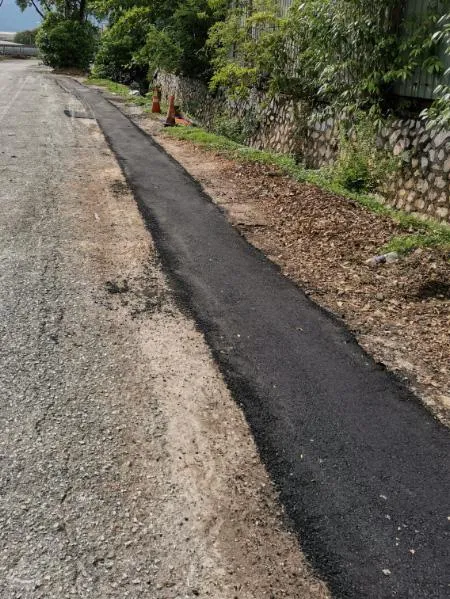Introduction
Open-cut construction is one of the most commonly used excavation methods in the construction industry. This technique involves the removal of surface layers to access underground infrastructure, such as pipelines, tunnels, and foundations. It is widely applied in roadworks, sewer and water pipeline installations, mining, and building foundations.
This article explores the principles of open-cut construction, its advantages and disadvantages, the materials and equipment involved, and safety considerations. Whether used for large-scale infrastructure projects or smaller utility repairs, understanding open-cut techniques is essential for engineers, contractors, and construction professionals.
Understanding Open-Cut Construction
Open-cut excavation, also known as open-trench excavation, involves digging a trench or large opening to install underground utilities or extract materials. This method is often preferred when the depth of excavation is shallow to moderate and when the project site conditions allow for open excavation without excessive disruptions.
In contrast to trenchless construction methods, such as horizontal directional drilling (HDD) or pipe jacking, open-cut construction provides direct access to the worksite. This makes it easier for workers to install, repair, or maintain underground structures.
Key Applications of Open-Cut Construction
- Utility Installation and Maintenance – is widely used for installing underground utilities such as water mains, sewer lines, gas pipelines, and electrical conduits.
- Road and Highway Construction – Many roadwork projects rely on this methods to prepare foundations, install drainage systems, and lay down infrastructure.
- Mining and Quarrying – this techniques are crucial in mining operations where minerals or raw materials need to be extracted from the earth’s surface.
- Foundation Work – Buildings and other structures often require this method for laying foundations, especially in commercial and industrial projects.
Advantages of Open-Cut Construction
1. Cost-Effectiveness
One of the biggest advantages of open-cut construction is its cost-effectiveness, especially for shallow and medium-depth excavations. The process requires relatively simple machinery and fewer specialized techniques compared to trenchless alternatives.
2. Accessibility
Since it exposes the entire work area, it allows for easier inspections, modifications, and maintenance. This direct access is crucial for large-scale infrastructure projects requiring precision and flexibility.
3. Efficiency in Short Distances
For projects covering short distances, open-cut methods are more efficient than trenchless methods. The excavation and backfilling processes can be completed quickly, reducing overall project timelines.
4. Versatility
It can be used in a variety of soil and environmental conditions. Whether in urban areas, highways, or rural locations, this method adapts well to different construction needs.
Disadvantages of Open-Cut Construction
1. Environmental and Traffic Disruptions
One major drawback of this method is its impact on the surrounding environment and infrastructure. In urban settings, it often leads to road closures, increased traffic congestion, and noise pollution.
2. Increased Material and Labor Costs for Deep Excavations
While open-cut construction is cost-effective for shallow projects, it becomes less economical for deeper excavations due to the need for additional shoring, backfilling, and structural support.
3. Safety Hazards
Open-cut excavation poses risks such as cave-ins, worker falls, and equipment-related accidents. Proper safety measures must be implemented to prevent workplace injuries.
Equipment Used in Open-Cut Construction
The success of open-cut construction depends on the right combination of heavy machinery and specialized tools. Some commonly used equipment includes:
- Excavators – Used for digging and removing soil, ranging from small backhoes to large hydraulic excavators.
- Bulldozers – Essential for pushing soil and leveling the ground.
- Dump Trucks – Transport excavated materials away from the site.
- Compactors – Help in compacting soil during backfilling.
- Shoring and Trench Boxes – Provide structural support to prevent trench collapses.
- Dewatering Pumps – Remove excess water from the excavation site, ensuring a dry and stable working area.
Safety Considerations in Open-Cut Excavation
Given the risks associated with this method, strict safety protocols must be followed. The following are key safety measures:
- Trench Shoring and Shielding – To prevent trench collapses, shoring (supporting trench walls) and shielding (protecting workers from falling debris) must be used.
- Proper Signage and Barriers – Construction zones should be clearly marked to prevent accidents involving pedestrians and vehicles.
- Regular Site Inspections – Engineers and safety officers should conduct routine inspections to identify and mitigate potential hazards.
- Worker Training and Protective Gear – All workers should be trained in excavation safety, and personal protective equipment (PPE) such as helmets, gloves, and safety boots should be mandatory.
- Dewatering Measures – Groundwater infiltration can weaken excavation walls, so dewatering techniques such as sump pumps and well points should be used.
Future Trends in Open-Cut Construction
With advancements in construction technology, this methods are continuously evolving to improve efficiency and reduce environmental impacts. Some emerging trends include:
- Use of Smart Construction Equipment – Automated excavators and GPS-guided machinery are being integrated into excavation projects to enhance precision.
- Eco-Friendly Excavation Techniques – New soil stabilization methods and biodegradable trench supports help reduce environmental damage.
- Hybrid Construction Approaches – Combining this method with trenchless methods optimizes costs and minimizes disruptions in urban areas.
- Advanced Safety Monitoring – AI-powered safety systems are being developed to detect potential hazards and improve worker safety.
Conclusion
Open-cut construction remains a fundamental excavation technique used across various industries. While it offers several advantages in terms of cost, efficiency, and accessibility, it also comes with challenges such as environmental disruption and safety risks. By implementing best practices and leveraging modern technology, construction professionals can maximize the benefits of this methods while mitigating potential drawbacks.
Whether in roadworks, utility installations, or mining operations, open-cut excavation continues to play a vital role in shaping infrastructure worldwide. As the construction industry evolves, improvements in safety, equipment, and sustainability will further enhance the effectiveness of open-cut techniques.

